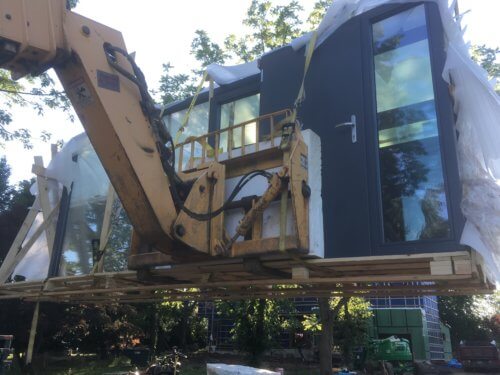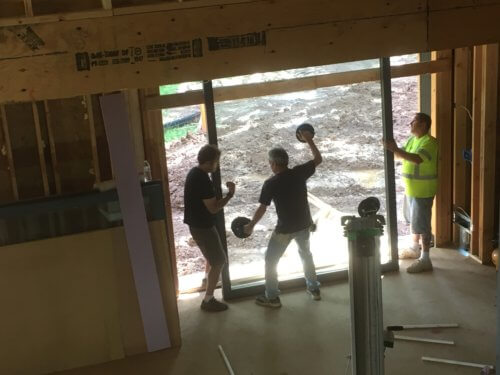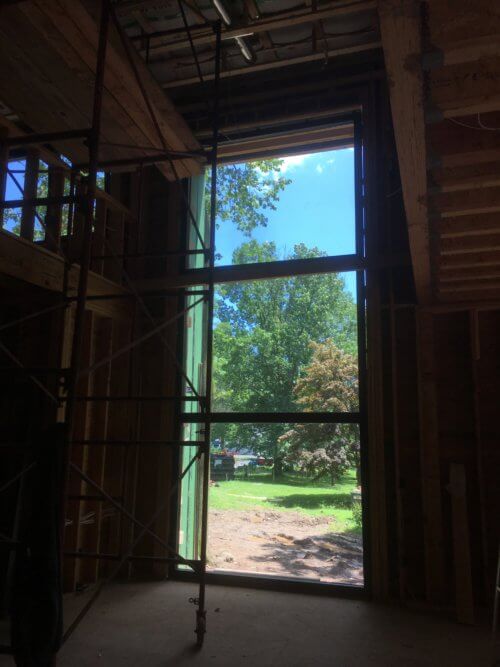Fenestration: minding the sunlight
The S/SE facade is designed to have the most amount of glass surfaces to capture and conserve solar energy. This, among other benefits, helps regulate interior temperatures and significantly lowers your electric bills. Large glass area is one of the main requirements of the Passive House concept but there is one caveat: the bigger the house, the harder it is to manage temperature fluctuations and keep the interior from overheating during summer. To mitigate possible overheating, we built a 3-foot overhang structure and a 5-foot cantilever around the largest windows. They help the house to stay cooler when the sun is high but still capture a lot of daylight in the winter months.
The quest for the right windows
The windows for a Passive House, a marvel in itself, are triple pane blocks of glass sitting inside the wood, plastic, fiberglass, or aluminum frame. While all the aforementioned materials are acceptable choices for passive house construction, the price quotes varied vastly with PVC still being the cheapest option.

Since the majority of residential builders do not deal with this type of construction, I began my own fenestration research. I quickly realized that the U.S. lagged badly in quality window manufacturing with triple-glazed production being a VERY niche market. At the time of my research, Marvin Windows was arguably the only mainstream company producing stunning frames that met project requirements. Their high quality, of course, came with a forbidden price tag for my project. Thankfully, there was an abundance of custom window manufacturers in the U.S. and Canada to fit the budget.
…Or so I thought
To my dismay, about a third of the local market was reselling Canadian fiberglass profiles. Domestically-made PVC frames either did not meet PH standards or minimalistic aesthetics I was after. Another third were high-quality custom shops whose names can be often found while fanning through architectural magazines like Dwell or AD. The rest were dealers of meticulously produced European-made windows that one can rarely look at before buying. The temptation of the latter was too overwhelming to harness… Six months and about a dozen price quotes later, I finally took a risk and placed an order for German-made tilt-and-turn Passive House certified windows in wood with aluminum cladding. They took about 4 months to arrive but were totally worth the wait.


